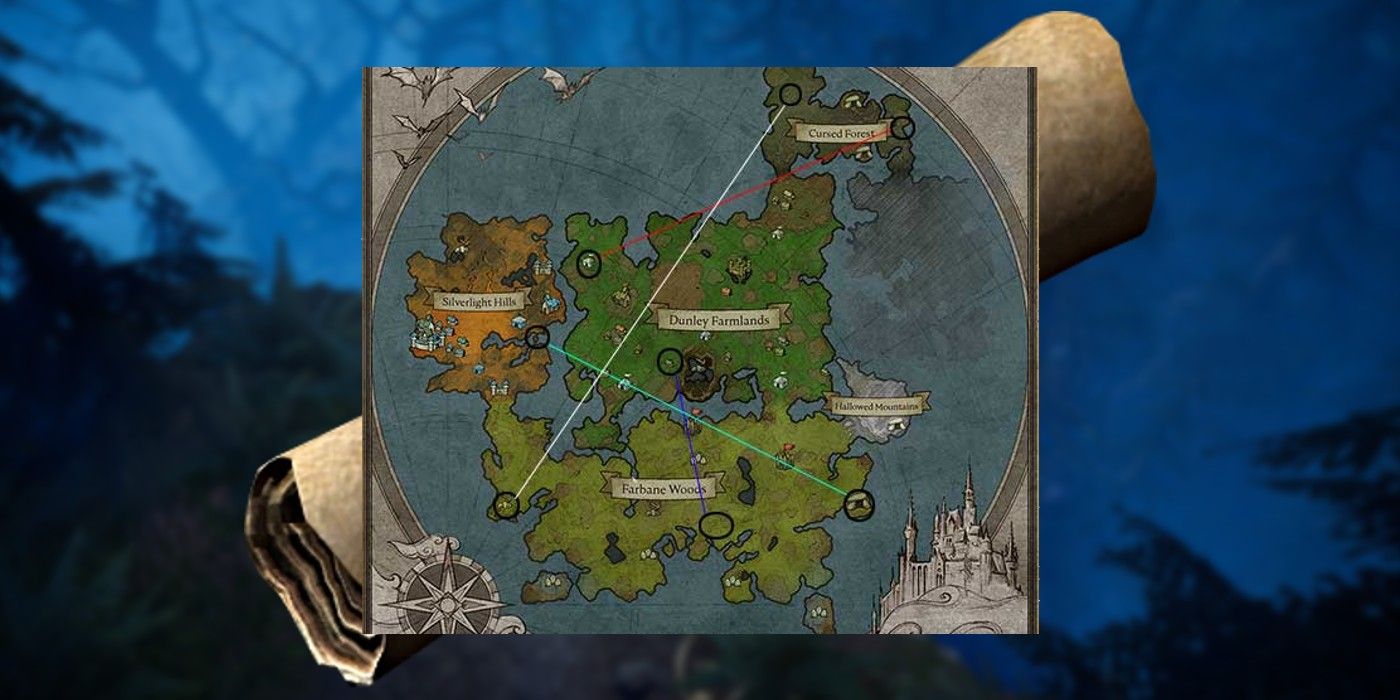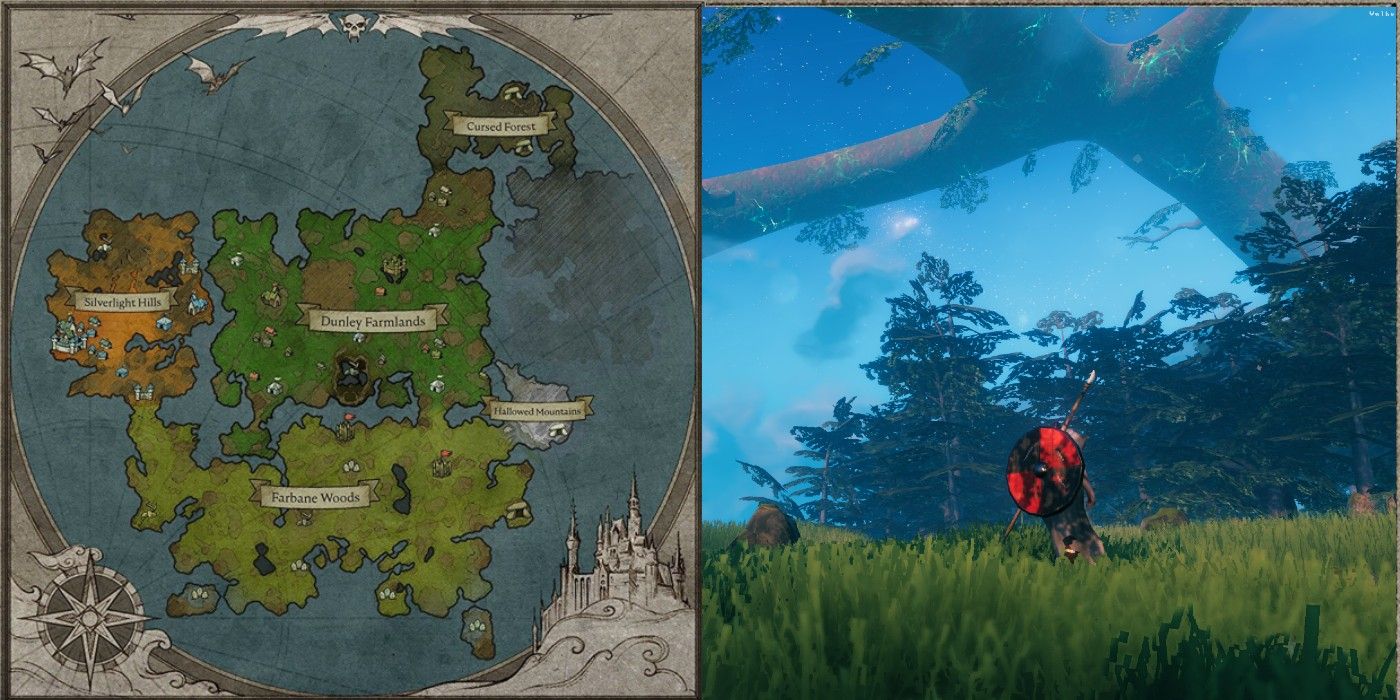V Rising is an MMO survival crafting game that is touted as a mix between Diablo and Valheim, but a huge difference between Valheim and V Rising is how their maps operate. Valheim uses procedural generation to create unique maps every time, while V Rising has a fixed map that is the same among all playthroughs. One could get around the randomness using a Valheim Map World Generator to display maps of the game world but there is not any in-game method of doing so, meaning that for most players the world will be completely unknown. While similar in many other ways, this map generation sets them apart from each other and caters to different player interests.
Valheim puts players in the role of Vikings as they are stuck in Purgatory exploring the fabled Yggdrasil, The World Tree. The story is open-ended, with players tasked with exploring the seas, forests, and snows of a dangerous land as they create a holding for themselves. Likewise, V Rising has similar open-ended elements with players becoming immortal vampires instead of Vikings. However, while Valheim heavily leans into themes of exploration, V Rising takes a more structured approach with quests and a static map.
V Rising and Valheim are often compared to each other for their strong survival crafting elements. There are some major differences between them, however. Aside from superficial differences like requiring food and stamina in Valheim, a big difference is how their maps are made. While seemingly minor, these different methods of map generation can have very significant effects on what kinds of players are attracted to each game. For those loving exploration, Valheim may be a better fit while V Rising's static map may be more desirable for those looking for stability and consistency.
V Rising's Structured Map Contrasts Valheim's Procedural Generation
The map of V Rising is in a fictional medieval European setting consisting of 5 regions. The player will always start at the bottom of the map and slowly work upwards as they progress in the game. Regions and camps are fixed, meaning that the player will encounter the same enemies in the same locations which continually respawn. This plays well with the structured questlines of V Rising, which require players to progress linearly as they build up a castle and unlock new technologies and spells. The unchanging map also means players can plan out castles more freely, such as around V Rising's best base locations. This type of map affords a greater consistency than what would be available in a procedurally generated map.
Valheim, on the other hand, procedurally generates maps from short "seeds," or code that causes a specific generation of a massive map. This type of map is completely randomized with each run. While similar regions are placed together, the specific layout will be different each time. This randomness forces the player to explore the map each time to find an optimal place for their base, in addition to finding specific resources and dungeons. However, it can also lead to some funny accidents, like a swamp dungeon spawning in Valheim's plains. Fortunately though, this lends well to the themes of exploration Valheim capitalizes on, much more so than V Rising.
Ultimately it is up to individual players to decide what is best for them. While V Rising's set map may be predictable, it is consistent and allows players to plan multiple playthroughs and castles with a little surprise. Conversely, other players may enjoy the thrill of exploring a new map every time in Valheim. Both V Rising and Valheim are solid entries into the survival crafting genre, and it is exciting to see such variety in what is available for different players to enjoy.


